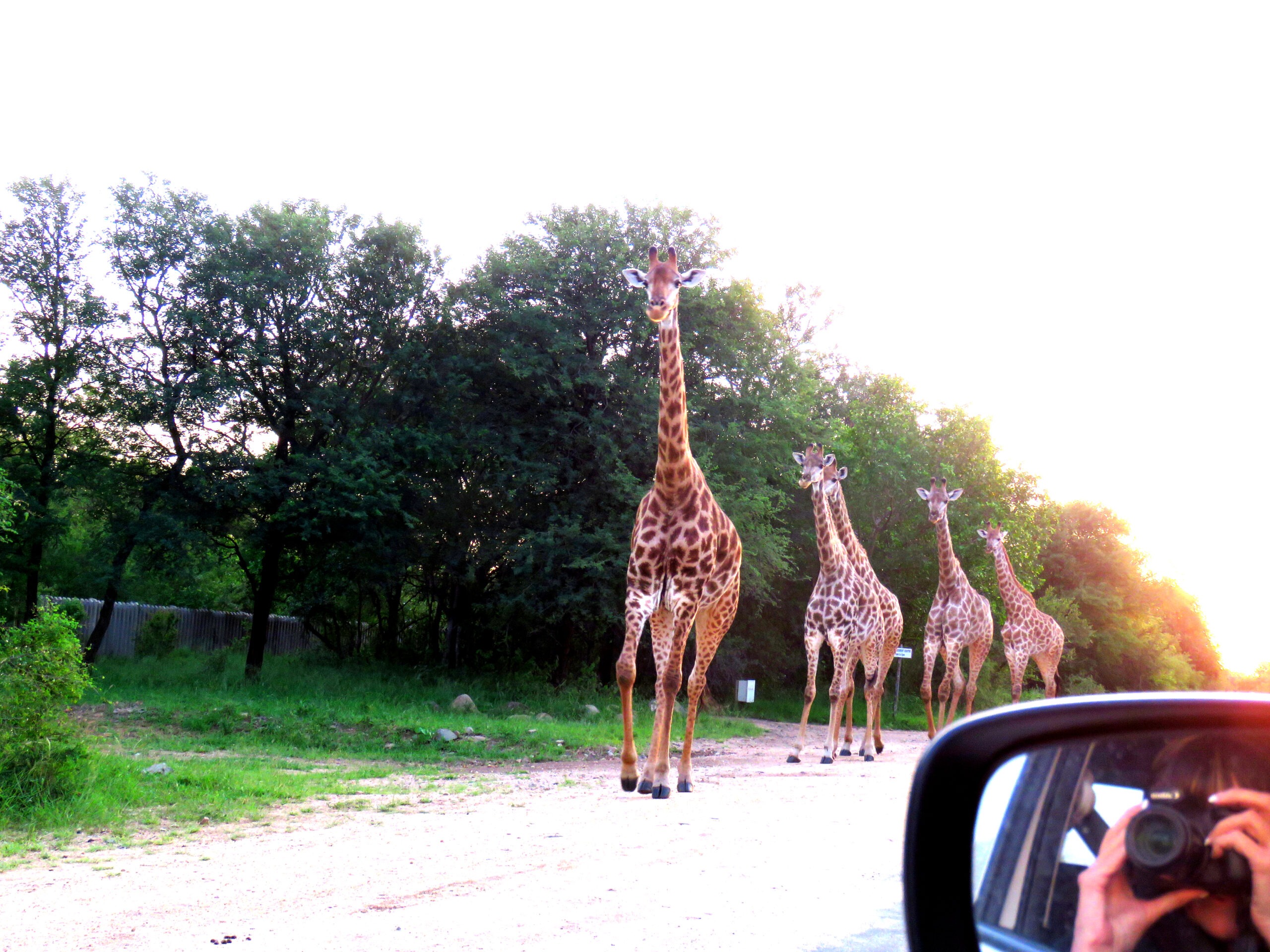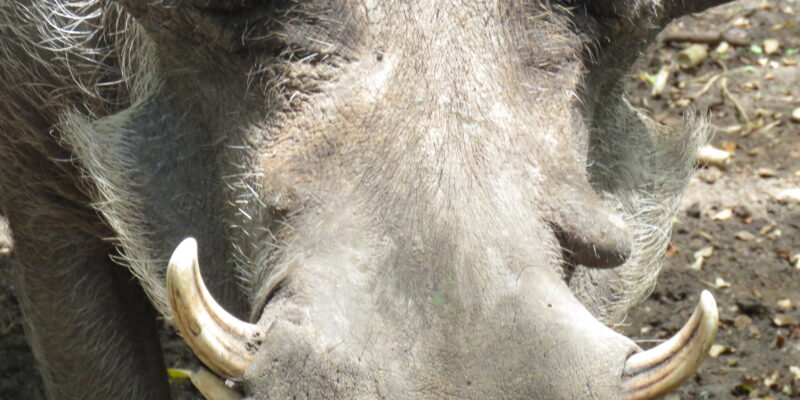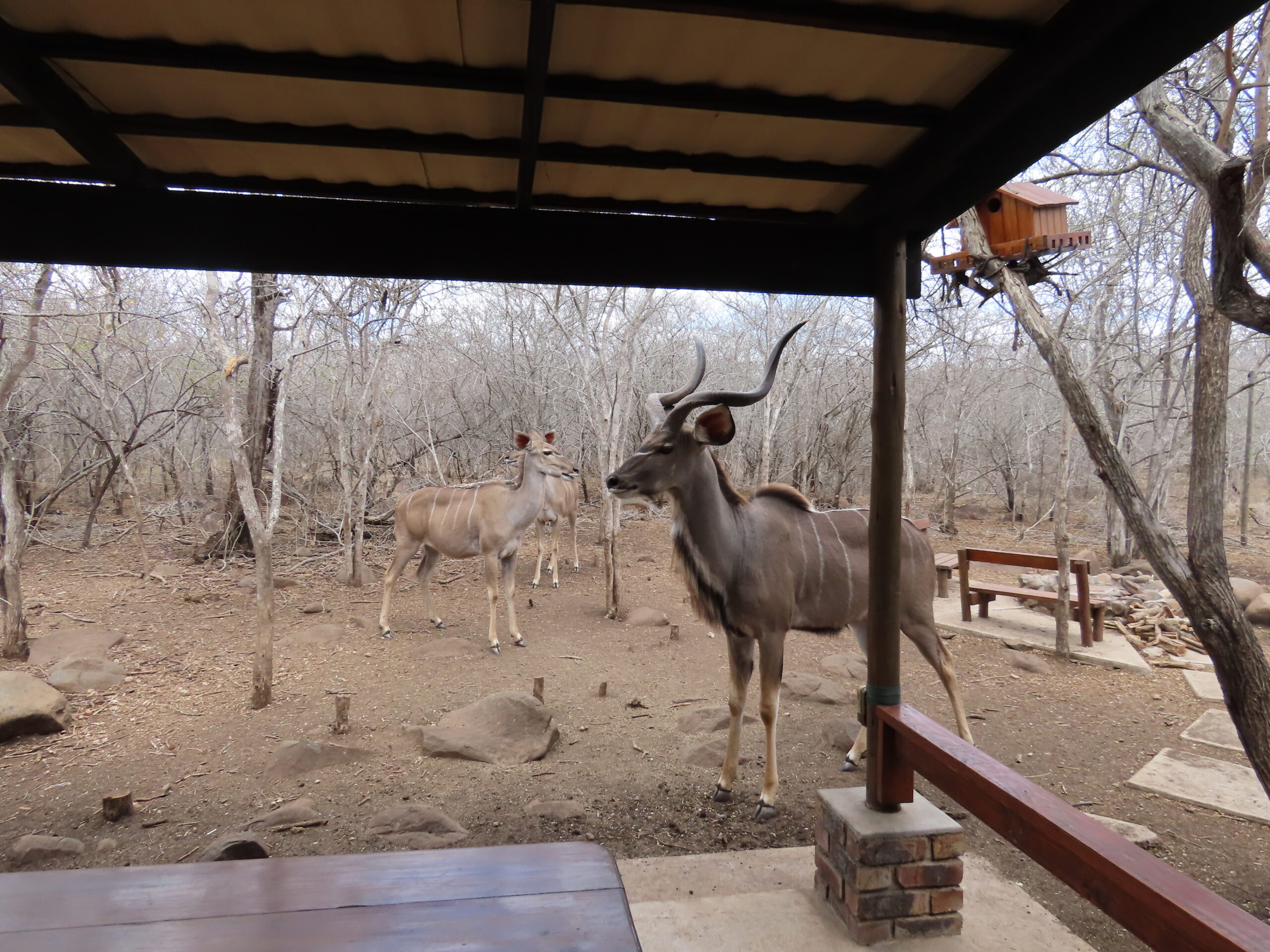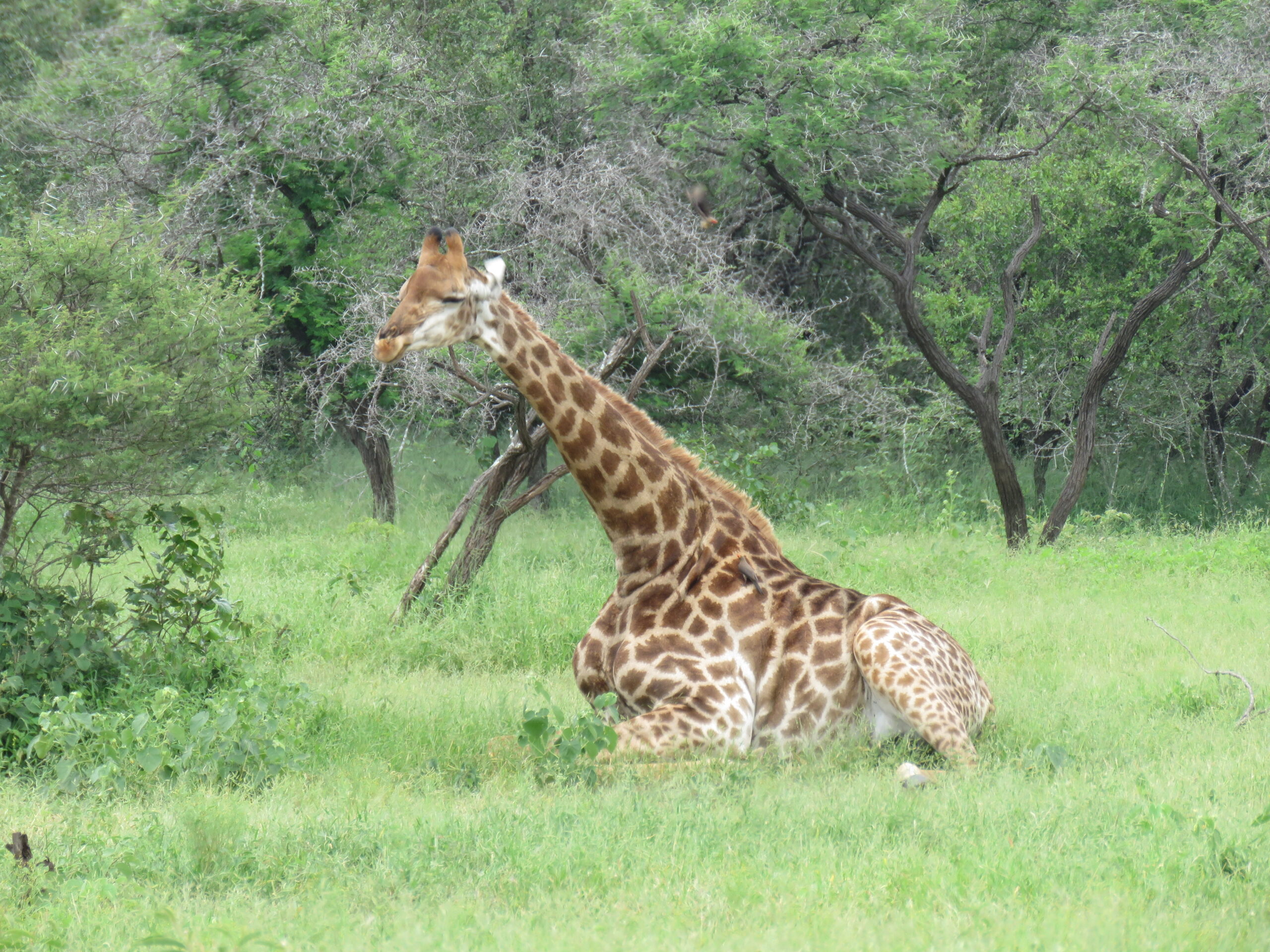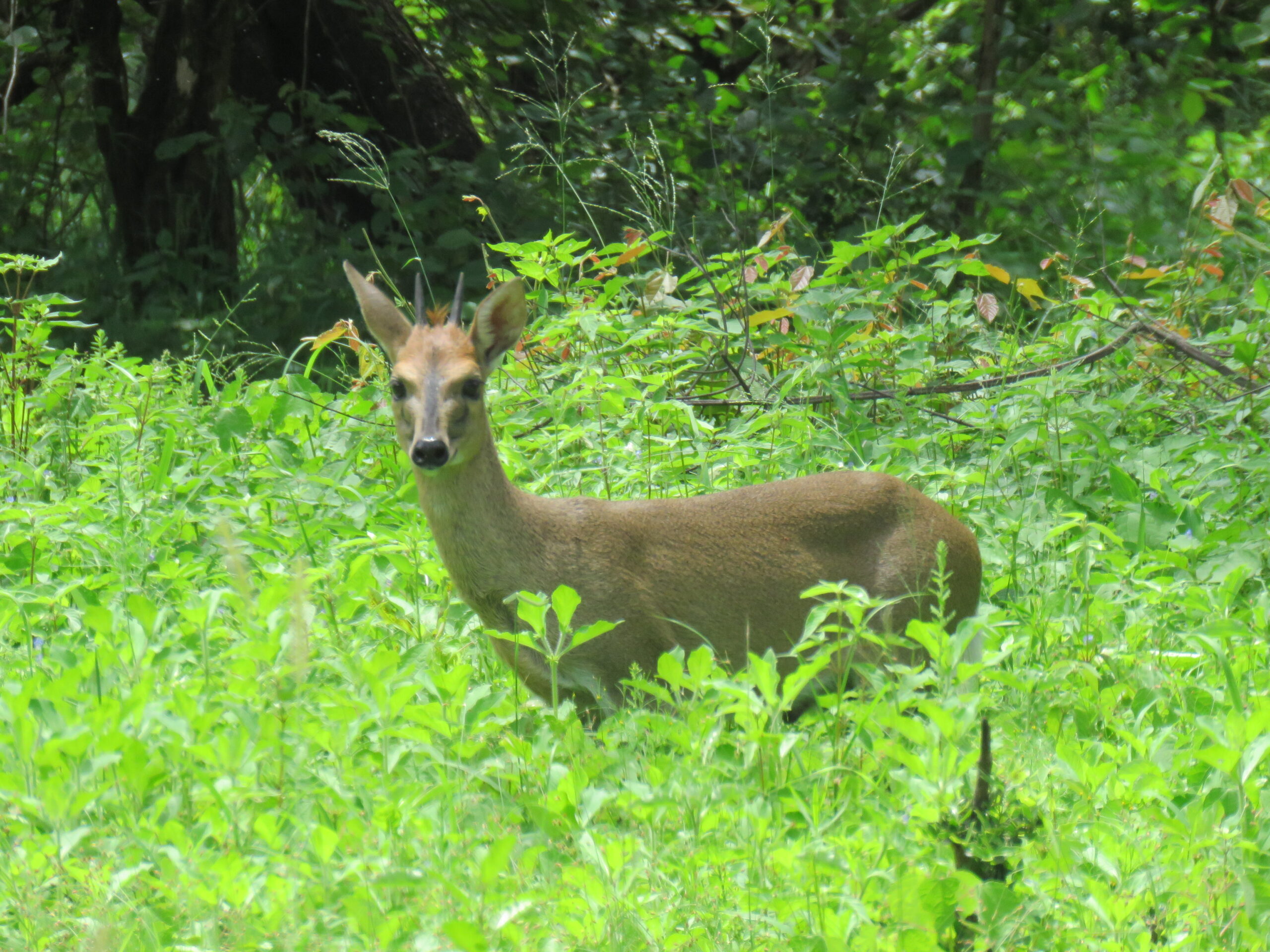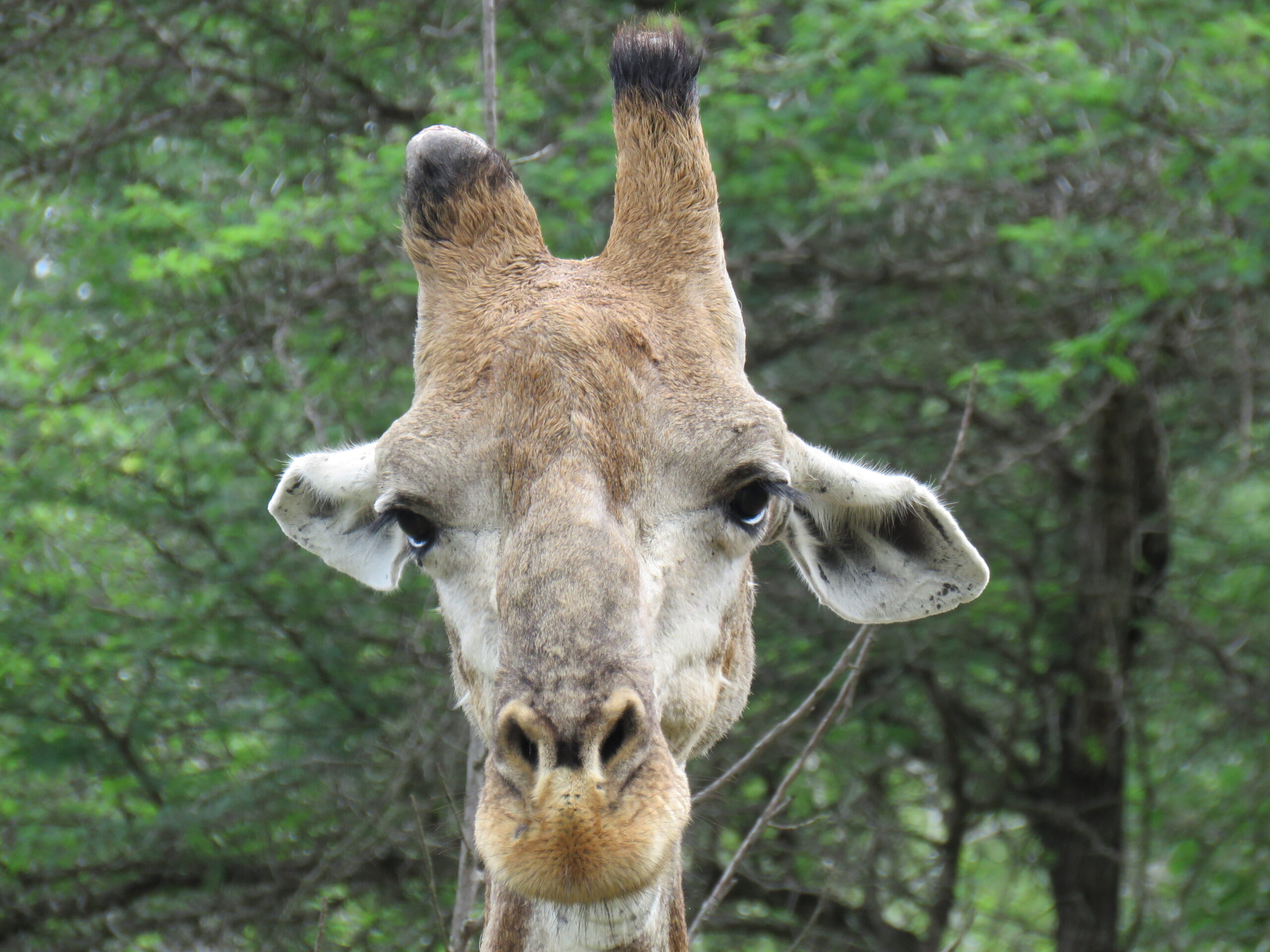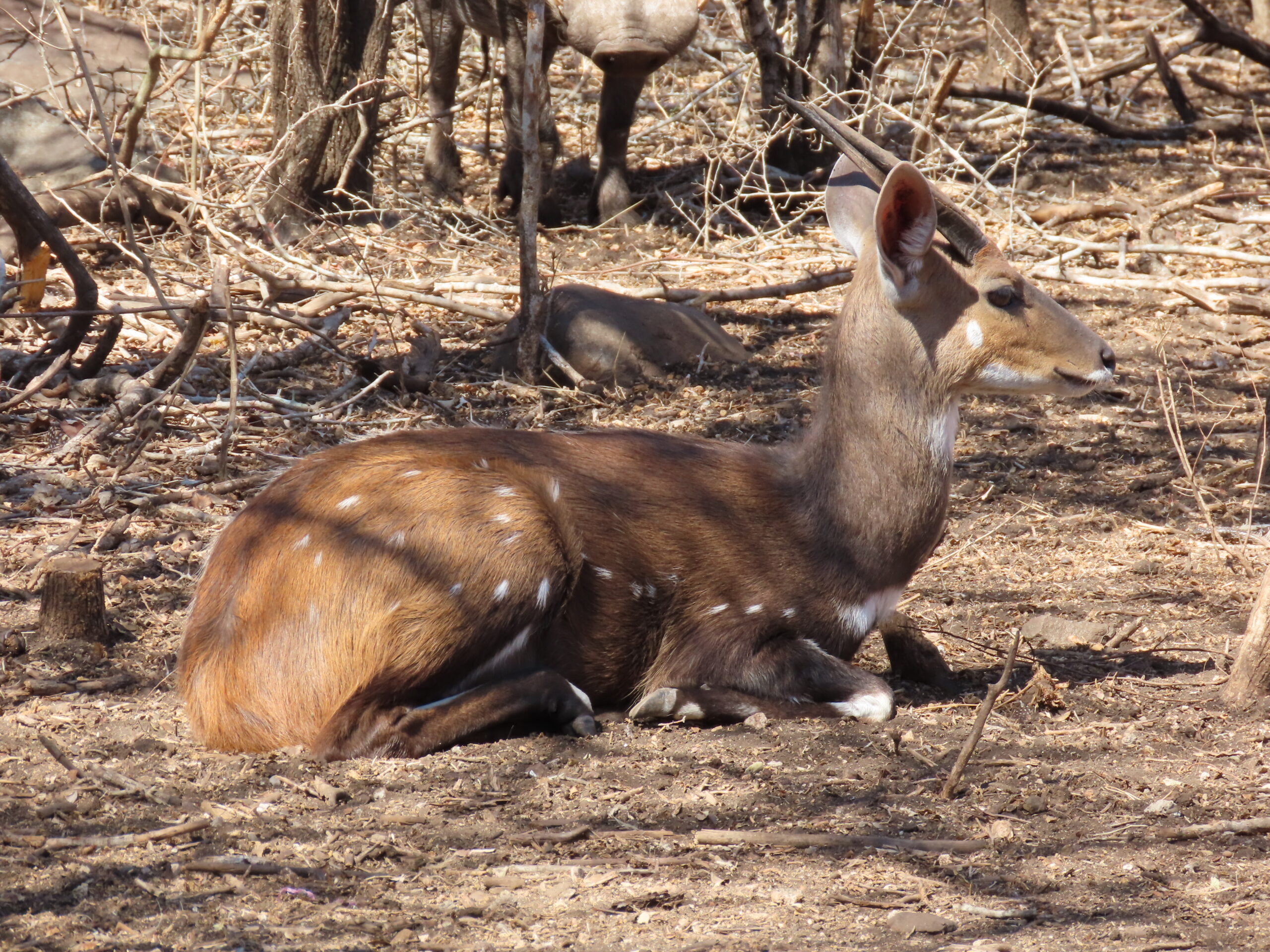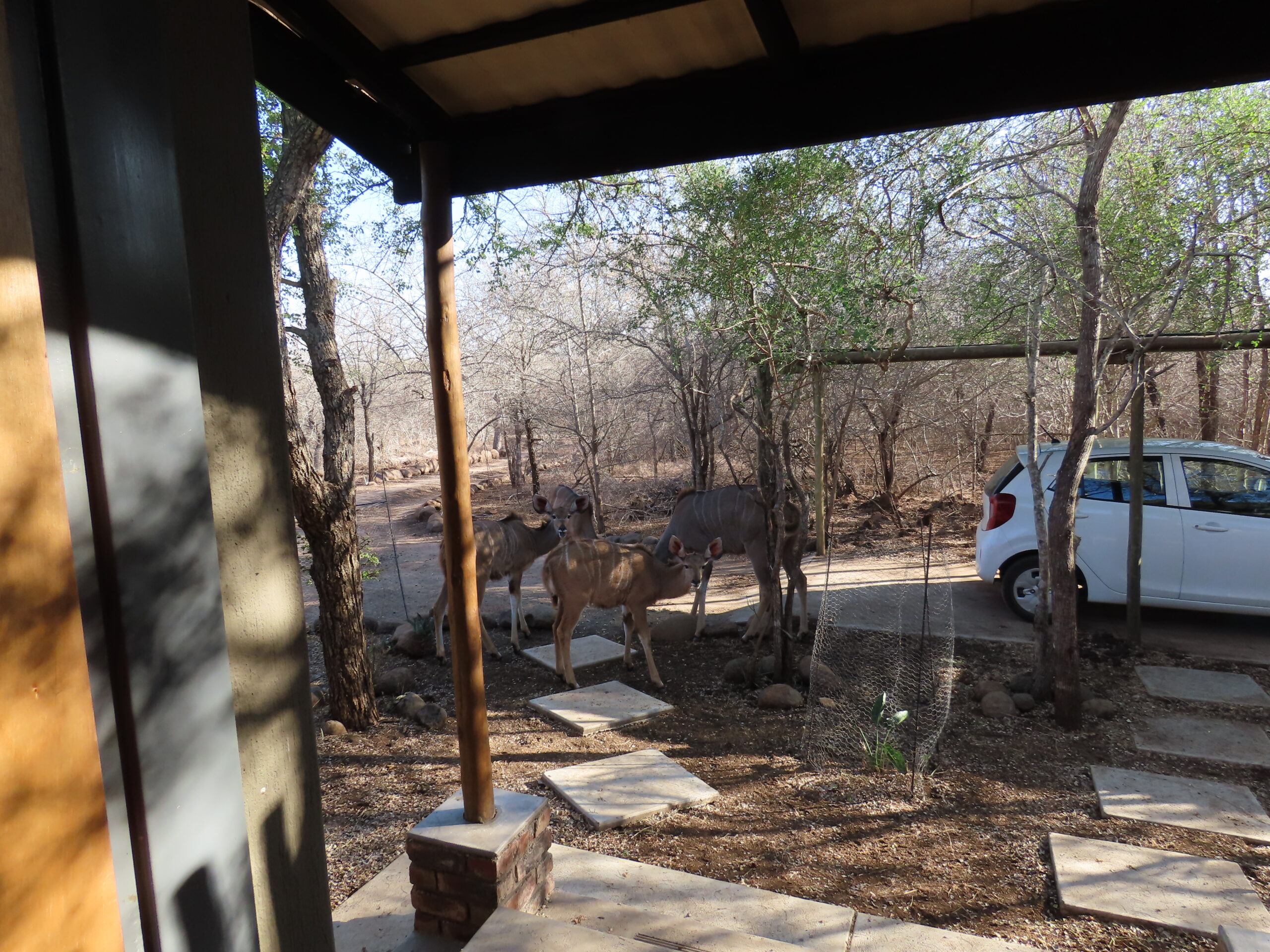
Yesterday afternoon, Tom beaconed me outdoors while I rested in the bedroom after another stormy night’s sleep due to this darned painful tooth socket to say we had 30 to 40 visitors of the same species. I assumed they were impalas since they are the only animals, other than birds and mongoose, where we’ve had such numbers in the garden.
Impalas are the most prolific antelopes in Marloth Park and also in Kruger National Park. They can give birth twice in one year and are healthy and sturdy animals. As mentioned in a prior post, over 100 impalas were relocated from Marloth Park to Lionspruit, providing more hunting opportunities for Desi and Fluffy, the only two lions in that game reserve located within the borders of Marloth Park.
I couldn’t believe how many impalas were in our garden and the surrounding bush when I stepped outside. It reminded me of a similar invasion we had in 2014 while living in the Hornbill house Rita and Gerhard currently occupy.
On that particular day, there were many more impalas, hundreds, much to our surprise. What an experience that was! But, yesterday, we were as thrilled as we’d been way back then. With many impalas recently moved to Liosnpruit and the possibility many were culled, it’s unlikely we’ll see hundreds of them in the garden anytime soon.

Here are some interesting facts about impalas from this site, you may find enjoyable:
“Impalas are medium-sized antelopes that look like a mix between a goat and a deer. They have long legs and necks and black, twisted horns. As members of the Bovidae family, they are related to goats, cattle, and sheep.
Size
Impalas weigh around the same amount as a large dog at 88 to 165 lbs. (40 to 75 kilograms). According to National Geographic, they grow to 33 to 39 inches (84 to 99 centimeters) long by adulthood and typically come up to the chest of an average-sized adult man. The male’s horns grow to 18 to 37 inches (46 to 94 cm) long.
Habitat
The impala is native to Africa and ranges from Angola, Namibia to northeast South Africa and north through Botswana, Zimbabwe, Mozambique, Zambia, Tanzania, and Kenya. According to the University of Michigan’s Animal Diversity Web (ADW), it lives in woodlands with little undergrowth and low to medium-high grassland. They also live in savannas.
Habits
Impala is diurnal, which means they are most active in the early morning and right before sunset. During the rainy season, impalas gather in groups of hundreds. In the dry season, the herds roam together to look for food. During the rainy season, males can be territorial and will herd females around a territorial area.
Groups of young impalas are called creches. According to ADW, these offspring groups are like nursery schools for the young, and they play together and groom each other.
Diet
Impalas are herbivores, which means they only eat vegetation. Their diets consist of bark, leaves, wood, and stems.
Offspring
Before giving birth, a female will leave the herd. After a gestation period of six to seven months, she will give birth, usually to only one offspring at a time. After a day or two, the mother impala will bring her calf back to the herd. Baby impalas are called calves. Calves are weaned at four to seven months, and at 12 to 18 months, the calf is mature enough to have its offspring. Impalas usually live to around 13 years in the wild.
Conservation status
According to the International Union for Conservation of Nature (IUCN), impalas are not endangered. Currently, the population is estimated at almost 2 million. Fifty percent of the population is found on private land, and another 25 percent of the population lives in protected areas. As a result, for the most part, the population is stable or increasing.
Other facts
Impalas are fantastic jumpers. According to National Geographic, they can leap as far as 33 feet (10 meters) and as high as 10 feet (3 meters). If impalas are running from predators, they are known to jump over obstacles in their way, such as large bushes or stumps, instead of going around them.
Impalas have reddish-brown hair with white fur on the underside of the chin, inside ears, on the belly and lips, over the eyes, and on the tail.
They also have black stripes down the forehead, tail, thighs, and ear tips. According to the University of Michigan, some scientists think they use these black stripes to identify each other. ”

Excitedly, I scurried about the veranda attempting to get good photos. However, impalas are very shy and cautious. Every motion I made sent them running into the bush. Instead, I decided to stay in one spot with the camera to ensure the best possible shots. They even reacted to the sound of the click when taking a photo. I have since turned off this feature.
As for today, I had booked a 10:00 am appointment with the dentist at the clinic in Marloth Park. Dr. Singh was off this week, and I couldn’t wait another day. The pain in the socket was excruciating, with no improvement over the past week. It has been nine days since the extraction.
With little sleep due to the pain, I had no choice but to seek help from another dentist in Dr. Singh’s absence. Fortunately, I was able to get an appointment for this morning with Dr. Lizannie, a 10-minute drive down Olifant Road, the only paved road in Marloth Park.
Tom waited for me in the car, playing with his phone, while I entered the medical clinic, fully masked, as always. After a 20 minute wait, I was escorted into the dental suite, where the dentist was waiting while filling out a health history form.
It took her exactly 30 seconds to diagnose my painful situation as a “dry socket,” I’d expected this after reading considerable information on pain after tooth extraction. In almost every case, I continued pain a week after the extraction due to a dry socket.
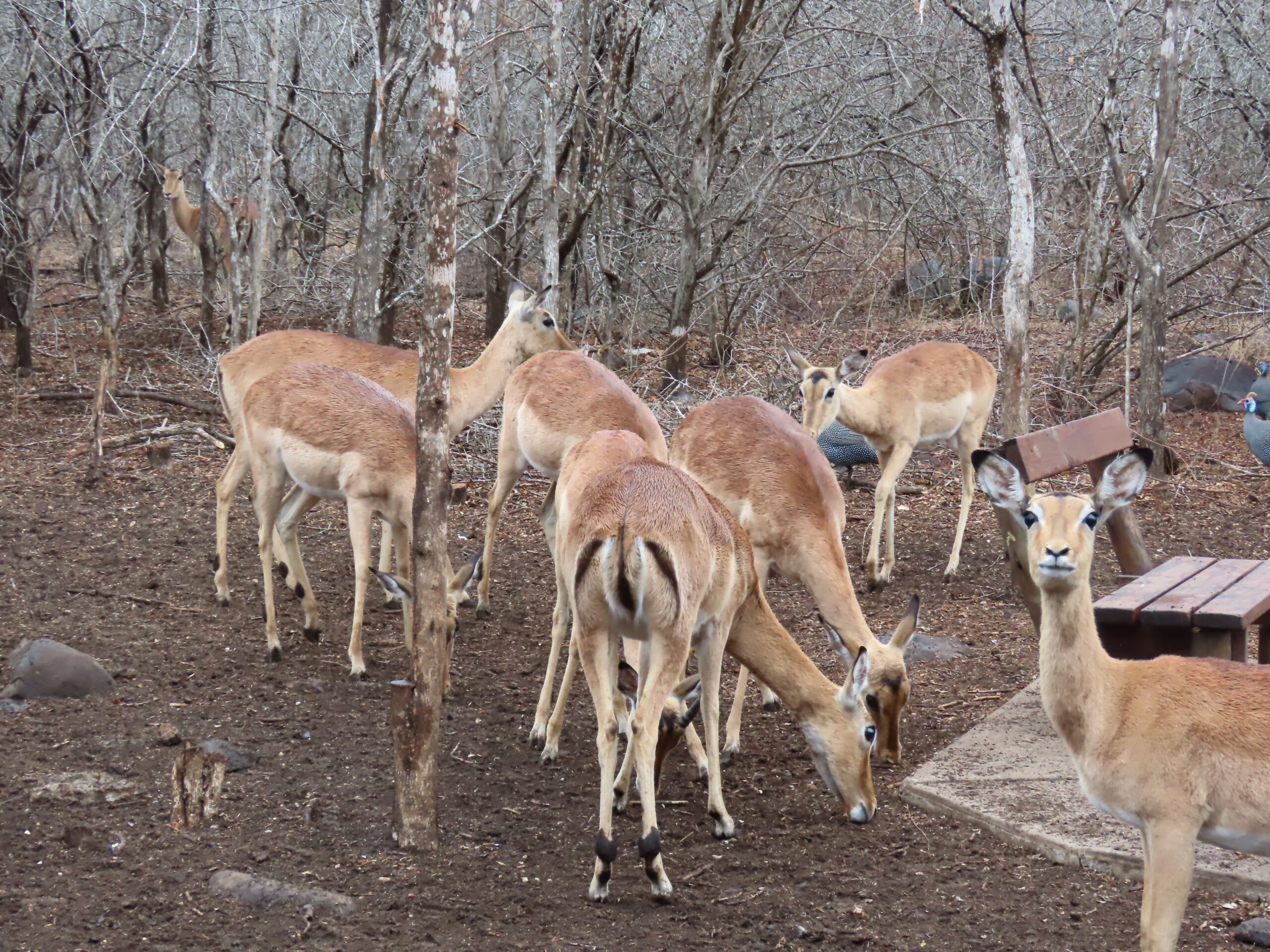
A dry socket (alveolar osteitis) is a painful dental condition that sometimes happens after a permanent adult tooth is extracted. A dry socket is when the blood clot at the tooth extraction site fails to develop, or it dislodges or dissolves before the wound has healed. From the Mayo Clinic in the US, a dry socket is described as follows:
Typically, a blood clot forms at the site of tooth extraction. This blood clot is a protective layer over the underlying bone and nerve endings in the empty tooth socket. The chunk also provides the foundation for the growth of new bone and the development of soft tissue over the clot.
Exposure of the underlying bone and nerves results in intense pain, not only in the socket but also along the nerves radiating to the side of your face. The socket becomes inflamed and may fill with food debris, adding to the pain. If you develop a dry socket, the pain usually begins one to three days after your tooth is removed.
Dry socket is the most common complication following tooth extractions, such as removing third molars (wisdom teeth). Over-the-counter medications alone won’t be enough to treat dry socket pain. Your dentist or oral surgeon can offer treatments to relieve your pain.”
Dr. Lisannie explained precisely how she was going to resolve it. She would numb the area of the socket with several injections. With the gums so sore from the past nine days, I was hesitant about those long needles, but surely whatever she would do would be more painful than the injections.
In no time at all, I was numb, and she began scraping off the layers of the socket to reveal fresh blood, which is intended to form a new blood clot to start the healing process all over again. The first clot never stayed in place.
Back home by 11:00 am, I didn’t take any more pain medication when I wanted to see how it feels when everything wears off. Now, at almost 3:00 om (1500 hrs), the pain is back, but it is nowhere near as painful as it had been before the procedure.
It’s expected I will be pain-free within a day or two. In the interim, no coffee, acidic foods, chunky foods, or wine until I am pain-free. Of course, I never felt like any of my light wine with this degree of pain, plus it’s not a good idea while taking any pain medication.
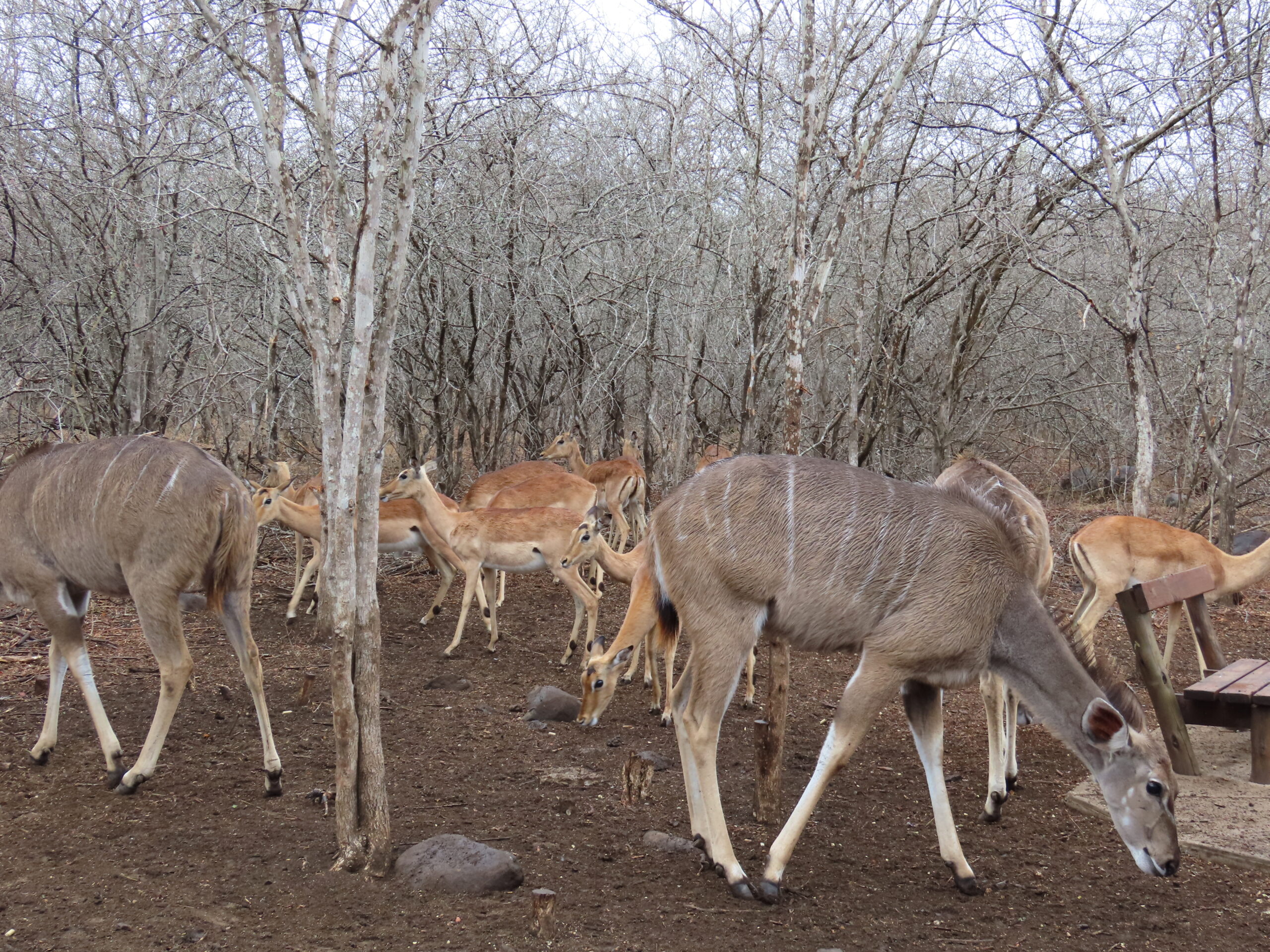
I already made our dinner tonight. Italian mozzarella stuffed meatballs with sauce and cheese for Tom, and finely chopped chicken salad, using chicken breasts we’d cooked yesterday. I may try to add a small finely chopped lettuce salad on the side.
Hopefully, by this time tomorrow, I’ll feel much better when we head to Rita and Gerhard’s house for sundowners. If I’m still not 100%, I’ll drink room temperature iced tea instead of the wine I am drinking now and throughout the evening.
Sorry for the late post! Have a lovely evening!
Photo from one year ago today, September 22, 2020:
 |
| This photo was posted one year ago today while in lockdown in a hotel in Mumbai, India, on day #183. Hans, our landlord and next-door neighbor, invited us for dinner outdoors in their garden. He built a roaring fire to which he later added a grate to cook an entire beef tenderloin without charcoal or lighter fluid. Check out that moon smiling down on us! For more photos, please click here. |













